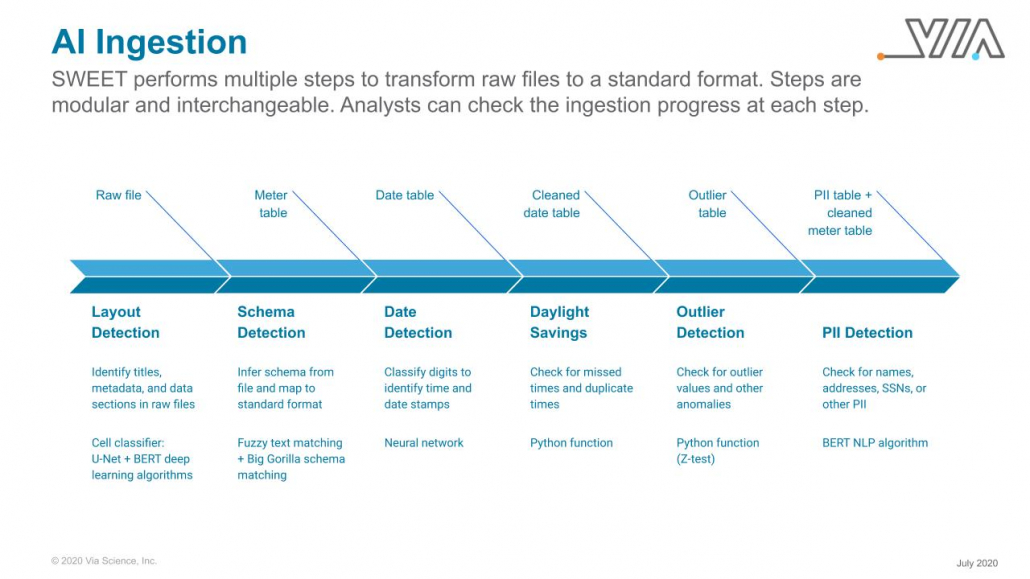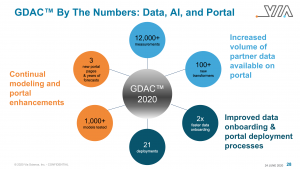AFWERX Announces VIA Among Top Teams Selected to exhibit at EngageSpace (September 29-30) The Premier Event for the Space Industry
Somerville, Mass., September 14, 2020 – AFWERX, the catalyst for fostering innovation within the U.S. Air Force, announced VIA as one of the 178 top participating teams selected from The AFWERX Space Challenge initiative to exhibit at EngageSpace, a virtual two-day event on September 29-30.
The AFWERX Space Challenge initiative is made up of four challenges targeted at creating integrated space operations leveraging the best in technology while maintaining security, being resilient and increasing agility. Four challenges were run concurrently focused on separate topics – Persistent ISR, DoD Commercial Space Partnerships, Global Space Transport and Delivery and Space Asset Resiliency.
Located in Somerville, VIA is competing in the Persistent ISR Challenge alongside a diverse group of teams that represent entrepreneurial startups, small businesses, large enterprises, academic institutions and research labs.
“The solutions submitted for these space challenges represent the bleeding edge of space innovation,” stated Brennan Townley, AFWERX Challenge Collaboration Lead. “We’re excited to highlight these innovators and connect them with opportunities across the Space ecosystem.”
The Persistent ISR Challenge strives to bring together the existing and future technology solutions to create a comprehensive Intelligence, Surveillance and Reconnaissance (ISR) system that spans the globe.
Trusted Analytics Chain™ (TAC™) from Via Science Inc. (VIA) simplifies the fusion and tracking of data from disparate systems. TAC™ offers USAF Commanders a robust and flexible data fusion layer to feed operational dashboards, AI/ML-enabled decision support systems, or predictive analytics tools. Unlike other platforms, TAC™ brings an analyst’s query or algorithm to where data is located, runs analysis there, and only returns to the analyst authorized answers. This avoids the cost and complexity of centralizing data or creating data lakes.
The EngageSpace event will feature highly engaging opportunities to connect, educate and innovate with other like-minded attendees, industry leaders, individual innovators, academia, investors, as well as military and government leaders. The entire event is designed to transform and accelerate the industry, and enable government buyers to pursue the most promising innovative solutions to the most pressing and threatening Space scenarios.
Register for the EngageSpace event by visiting https://engage.space
“Data fusion is inherently complicated because essential data is distributed across physical or virtual storage locations; formats; degrees of quality and completeness; levels of security classification; and ownership (e.g., DOD, commercial vendor, public domain, etc.). We’re honored to be one of the few selected to present TAC™ to the Space and Missile Systems Center and Pacific Air Forces to address this need,” said Joe Babiec, VIA’s Senior Vice President, Strategic Initiatives.
About VIA
VIA helps governments, regulators, and power companies deliver $200Bn in energy every year to more than 100 million customers. VIA’s privacy-preserving analytics software, Trusted Analytics Chain™ (TAC™) reduces the cost and improves the quality of service of electricity transmission and distribution using AI and blockchain technologies. TAC™ (patents pending) is the bridge that securely connects power company data, distributed across many locations, to potential AI solutions. VIA established the Global Data Asset Collaborative™ (GDAC™), built on top of TAC™, to allow multiple companies to securely pool data for more accurate analytics. Headquartered in Somerville, Massachusetts, VIA has received an InnovateMass grant from the Massachusetts Clean Energy Center and has been featured in Wired and Inc. Magazine for its leadership in technology innovation. For more information, please visit www.solvewithvia.com.
###
ABOUT AFWERX
Established in 2017, AFWERX is a product of the U.S. Air Force, directly envisioned by former Secretary of the Air Force Heather Wilson. Her vision of AFWERX — to solve some of the toughest challenges that the Air Force faces through innovation and collaboration amongst our nation’s top subject matter experts. AFWERX serves as a catalyst to unleash new approaches for the warfighter through a growing ecosystem of innovators. AFWERX and the U.S. Air Force are committed to exploring viable solutions and partnerships to further strengthen the Air Force, which could lead to additional prototyping, R&D, and follow-on production contracts.
Fast Company named AFWERX Best Workplaces for Innovators on the 2020 List, honoring the top 100 businesses and organizations that demonstrate a deep commitment to encouraging innovation at all levels. AFWERX, U.S. Air Force’s innovation arm and catalyst for fostering innovation within the Air Force, came in at #16 ranking in the top 20 alongside brands such as Microsoft, Google, and Amazon. Preview the live announcement with Stephanie Mehta, Editor-in-Chief of Fast Company, unveiled during the AFWERX Fusion 2020 Base of the Future Event & Showcase.
Media Contacts:
Tracy Skenandore / Makenzie Coombs
AFWERX@kirvindoak.com



